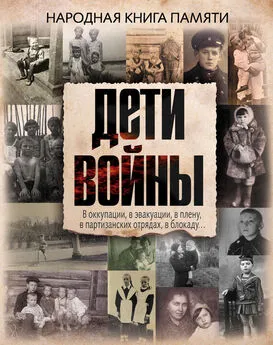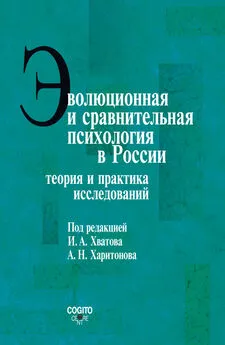Коллектив авторов - Звездные войны. Психология киновселенной
- Название:Звездные войны. Психология киновселенной
- Автор:
- Жанр:
- Издательство:Литагент 5 редакция
- Год:2016
- Город:Москва
- ISBN:978-5-699-88149-9
- Рейтинг:
- Избранное:Добавить в избранное
-
Отзывы:
-
Ваша оценка:
Коллектив авторов - Звездные войны. Психология киновселенной краткое содержание
Звездные войны. Психология киновселенной - читать онлайн бесплатно ознакомительный отрывок
Интервал:
Закладка:
3
Allston, A. (2010). Outcast (Star Wars: Fate of the Jedi). New York: Del Rey.
Botvinick, M., & Cohen, J. (1998). Rubber hands “feel” touch that eyes see. Nature, 391, 756–760.
Cardinali, L., Frassinetti, F., Brozzoli, C., Roy, A. C., Urquizar, C., & Farnè A (2009). Tool-use induces morphological updating of the body schema. Current Biology, 19(12), R478–479.
Ehrsson, H. H., Rosén, B., Stockselius, A., Ragnö, C., Köhler, P., & Lundborg, G. (2008).
Upper limb amputees can be induced to experience a rubber hand as their own. Brain, 131, 3443–3452.
Ganguly, K., & Carmena, J. M. (2009). Emergence of a stable cortical map for neuroprosthetic control. PLoS Biology, 7(7), e1000153.
Gentleman, A. (2012, August 31). US Paralympic coverage disappointing, says chef de mission. The Guardian: http://www.theguardian.com/sport/2012/aug/31/us-paralympicstv-coverage-disappointing.
Lewis, J. W. (2006). Cortical networks related to human use of tools. The Neuroscientist, 12(3), 211–231.
Penfield, W., & Rasmussen, T. (1950). The cerebral cortex of man: A clinical study of localization of function. New York, NY: Macmillan.
Ramachandran, V. S., & Altschuler, E. L. (2009). The use of visual feedback, in particular mirror visual feedback, in restoring brain function. Brain, 132, 1693–1710.
Ramachandran, V. S., & Hirstein, W. (1998). The perception of phantom limbs: The D. O. Hebb lecture. Brain, 121, 1603–1630.
Stover, M. (2005). Star Wars Episode III: Revenge of the Sith. New York: Del Rey.
Suminski, A. J., Tkach, D. C., Fagg, A. H., & Hatsopoulos, N. G. (2010). Incorporating feedback from multiple sensory modalities enhances brain-machine interface control. Journal of Neuroscience, 30(50), 16777–16787.
4
Adler, A. (1908/1959). Understanding human nature. New York, NY: Fawcett.
Adler, A. (1924). The practice and theory of individual psychology. London, UK: K. Paul, Trench, Trubner & Company.
Goldstein, K. (1939/1995). The organism: A holistic approach to biology derived from pathological data in man. New York, NY: Zone.
Query Note: Is Koltko spelled correctly? See Notes 12. Also, insert first initial or two. Per Google search, this is M. E. Also, fix 302–3317.
Koltko-Rivera (2006). Rediscovering the later version of Maslow's hierarchy of needs: Self-transcendence and opportunities for theory, research, and unification. Review of General Psychology, 10(4), 302–3317.
Kornhauser, R. R. (1978). Social sources of delinquency. Chicago, IL: University of Chicago Press.
Maslow, A. (1943). A theory of human motivation. Psychological review, 50(4), 370–396.
Maslow, A. (1954). Motivation and personality. New York, NY: Harper.
Maslow, A. (1966). The psychology of science: A reconnaissance. New York, NY: Harper & Row.
Maslow, A. (1970). Motivation and personality (2nd ed.). New York, NY: Harper & Row.
Maslow, A. (1971). The farther reaches of human nature. New York, NY: Viking Press.
Millon, T, Davis, R., Millon, C, Escovar, L., & Meagher, S. (2004). Personality disorders in modern life.New York, NY: Wiley.
Schacter, D. L., Gilbert, D. T, & Wegner, D. M. (2011). Human needs and self-actualization. Psychology (2nd ed.). New York, NY: Worth.
Файлы силы
Cattell, R. B. (1946). The description and measurement of personality. New York, NY: World Book.
Cattell, R. В., Cattell, A. K., & Cattell, H. E. P. (1993). 16PF questionnaire (5th ed.).
Champaign, IL: Institute for Personality and Ability Testing. Denning, T. (2003). Tatooine ghost (Star Wars). New York, NY: LucasBooks, Random House.
Eysenck, H. J. (1947). Dimensions of personality. London, UK: Routledge & Kegan Paul.
Eysenck, H. J., & Eysenck, S. B. G. (1976). Psychoticism as a dimension of personality. London, UK: Hodder and Stoughton.
Goldberg, L. R. (1981). Language and individual differences: The search for universale in personality lexicons. Review of Personality and Social Psychology, 1, 141–165.
McCrae, R. R., & Costa, P. T. (1985). Updating Norman's "adequate taxonomy": Intelligence and personality dimensions in natural language and in questionnaires. Journal of Personality and Social Psychology, 49, 710–721.
McCrae, R. R., & Costa, P. T. (1987). Validation of the five-factor model of personality across instruments and observers. Journal of Personality and Social Psychology, 52(1), 81–90.
McCrae, R. R. & Costa, P. T. (1990). Personality in adulthood. New York: Guilford.
McCrae, R. R., & John, O. P. (1992). An introduction to the Five-Factor Model and its applications. Journal of Personality,60(2), 175–215.
Norman, W. T. (1963). Toward an adequate taxonomy of personality attributes: Replicated factor structure in peer nomination personality ratings. Journal of Abnormal and Social Psychology, 66(6), 574–583.
Saraglou, V. (2002). Religion and the five factors of personality: A meta-analytic review. Personality and Individual Differences, 32, 15–25.
Tupes, E. C, & Christal, R. E. (1961). Recurrent personality factors based on trait ratings. USAF ASD Technical Report No. 61–97. Lackland Airforce Base, TX: U. S. Air Force.
Глава 2
5
Anderson, K. J. (1996). Therefore I am: The tale of IG-88. In K. J. Anderson (Ed.), Tales of the bounty hunters. New York, NY: Spectra.
Query Note: For Arras, К. O., please flush out reference.
Arras, К. O., & Cerqui, D. (2005). Do we want to share our lives and bodies with robots? A 2000 people survey. No. LSA-REPORT-2005–002.
Barra-Chicote, R., Yamagishi, J., King, S., Montero, J. M., & Macias-Guarasa, J. (2006).
Prosodic and segmental rubrics in emotion identification. 2006 IEEE International Conference on Acoustics, Speech and Signal Processing. ICASSP 2006 Proceedings, p. I–I.
Bartneck, C, Kanda, T, Ishiguro, H., & Hagita, N. (2007). Is the uncanny valley an uncanny cliff? In D. S. Kwon (Ed.), The 16th IEEE International Symposium on Robot and Human Interactive Communication, 2007. RO-MAN 2007, pp. 368–373.
Bartneck, C, Kanda, T, Ishiguro, H., & Hagita, N. (2009). My robotic doppelganger:
A critical look at the uncanny valley. In The 18th IEEE International Symposium on Robot and Human Interactive Communication, Japan, 2009, 269–276.
Baum, F. L. (1900). The Wonderful Wizard of Oz. New York, NY: George M. Hill.
Borenstein, S. (2007, August 8). Scientists struggle to define life. USA Today; http://usatoday30.usatoday.com/tech/science/2007-08-19-life_N.htm.
Breazeal, C. (2003). Emotion and sociable humanoid robots. International Journal of Human-Computer Studies, 59(1), 119–155.
Burleigh, T. J., Schoenherr, J. R., & Lacroix, G. L. (2013). Does the uncanny valley exist? An empirical test of the relationship between eeriness and the human likeness of digitally created faces. Computers in Human Behavior, 29(3), 759–771.
Davies, J. (2014). Riveted: The science of why jokes make us laugh, movies make us cry, and religion makes us feel one with the universe. London, UK: Palgrave Macmillan.
Dovidio, J. F., Johnson, J. D., Gaertner, S. L., Pearson, A. R., Saguy, T, & Ashburn-Nardo, L. (2010). Empathy and intergroup relations. Prosocial motives, emotions, and behavior: The better angels of our nature, 393–408.
Gombay, A. (2007). Descartes. Oxford, UK: Blackwell.
Gray, К., & Wegner, D. M. (2012). Feeling robots and human zombies: Mind perception and the uncanny valley. Cognition, 125(1), 125–130.
Kahneman, D. (2011). Thinking, fast and slow. New York, NY: Farrar, Straus &Giroux.
Kret, M. E., & de Gelder, B. (2012). Islamic headdress influences how emotion is recognized from the eyes. Frontiers in Psychology, 3, 110.
Mann, L. (1981). The baiting crowd in episodes of threatened suicide. Journal of Personality and Social Psychology, 41(4), 703–709.
Minsky, M. (1986). The society of mind. New York, NY: Simon & Schuster.
Mori, M. (1970). Bukimi no tani [The Uncanny Valley]. Energy, 7(4), 33–35.
Mori, M., MacDorman, K. F, & Kageki, N. (2012). The uncanny valley [from the field].
Robotics and Automation Magazine, IEEE, 19(2), 98–100.
Page, R. A., & Moss, M. K. (1976). Environmental influences on aggression: The effects of darkness and proximity of victim. Journal of Applied Social Psychology, 6(2), 126–133.
Reeves, В., & Nass, C. (1996). How people treat computers, television, and new media like real people and places. Cambridge, MA: Cambridge University Press.
Reynolds, D. J., & Gifford, R. (2001). The sounds and sights of intelligence: A lens model channel analysis. Personality and Social Psychology Bulletin, 27(187), 187–200.
Rosenthal-von der Pütten, A. M., Kramer, N. C, Hoffmann, L., Sobieraj, S., & Eimler, S. C. (2013). An experimental study on emotional reactions towards a robot. International Journal of Social Robotics, 5(1), 17–34.
Turing, A. M. (1950). Computing machinery and intelligence. Mind, 49(236), 433–460.
Waytz, A., Gray, K., Epley, N, & Wegner, D. M. (2010). Causes and consequences of mind perception. Trends in Cognitive Science, 14(8), 383–388.
Zhong, C. B., Bohns, V. K., & Gino, F. (2010). Good lamps are the best police: Darkness increases dishonesty and self-interested behavior. Psychological Science, 21(3), 311–314.
6
American Psychiatric Association (2013). Diagnostic and statistical manual of mental disorders(5th ed.). Arlington, VA: American Psychiatric Publishing.
Bonanno, GA. (2009). The other side of sadness: What the new science of bereavement tells us aboutlife after loss. New York, NY: Basic Books.
Brannon, R. (1976). The male sex role: Our culture's blueprint for manhood and what it's done for us lately. In D. David &R. Brannon (Eds.), The forty-nine percent majority: The male sex role (pp. 1–48). Reading, MA: Addison-Wesley.
Burke, R. J. (2002). Men, masculinities, and health. In D. L. Nelson & R. J. Burke (Eds.), Gender, work stress, and health (pp. 35–54). Washington DC: American Psychological Association.
Englar-Carlson, M., & M. A. Stevens (Eds.), In the room with men: A casebook of therapeutic change (pp. 91–107). Washington, DC: American Psychological Association.
Cochran, S. (2006). Struggling for sadness: A relational approach to healing men's grief. In M. Englar-Carlson, & M. A. Stevens (Eds.), In the room with men:
жA casebook of therapeutic change (pp. 91–107). Washington, DC: American Psychological Association.
Comeas-Diaz, L., Luthar, S., Maddi, S., O'Neill, H., Saakvitne, K., & Tedeschi, R. (n.d.). The road to resilience. American Psychological Association; http://www.apa.org/helpcenter/road-resilience.aspx.
Englar-Carlson, M. (2006). Masculine norms and the therapy process. In M. Englar-Carlson & M. A. Stevens (Eds.), In the room with men: A casebook of therapeutic change (pp. 13–47). Washington, DC: American Psychological Association.
Geary, D. C. (2010). Male, female: The evolution of human sex differences (2nd ed.). Washington, DC: American Psychological Association.
Kubler-Ross, E. (1985). On children and death. New York, NY: Touchstone.
Kubler-Ross, E. (1969). On death and dying: What the dying have to teach doctors, nurses, clergy, and their own families. New York, NY: Scribner.
Kubler-Ross, E. (2005). On grief and grieving: Finding the meaning of grief through the five stages of loss. New York, NY: Simon & Schuster.
Lamb, M. E. (2000). Fathering. In A. E. Kazdin (Ed.), Encyclopedia of psychology (vol. 3, pp. 338–341). New York, NY: Oxford University Press.
Читать дальшеИнтервал:
Закладка:










